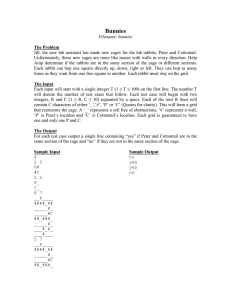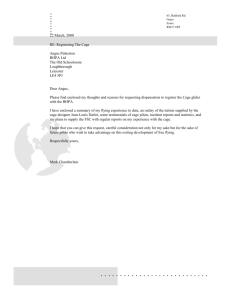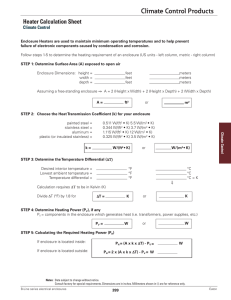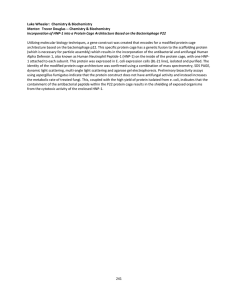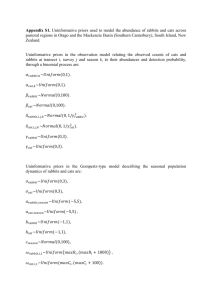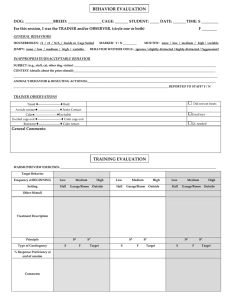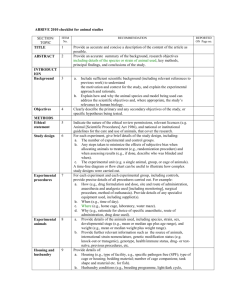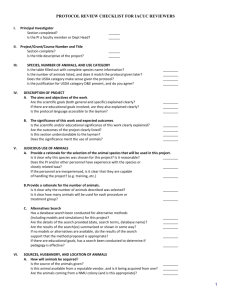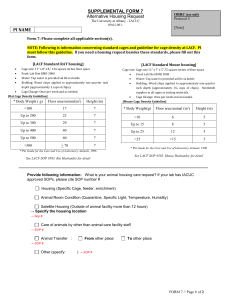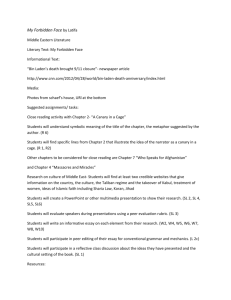Space Recommendations - UCSF Animal Care and Use Program
advertisement
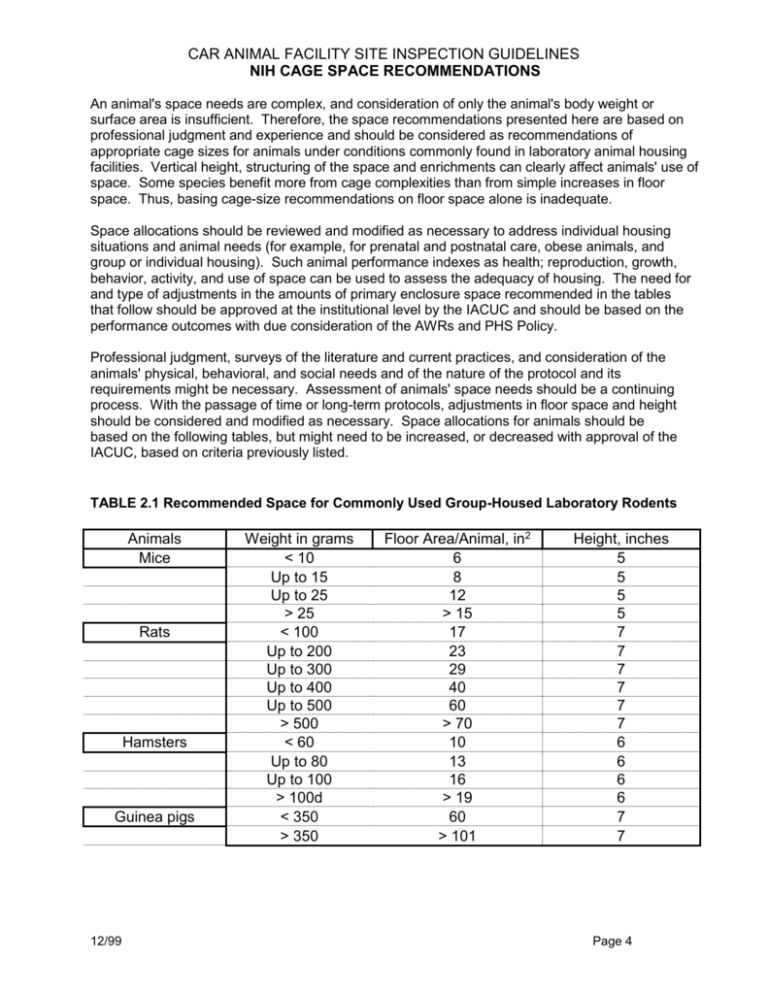
CAR ANIMAL FACILITY SITE INSPECTION GUIDELINES NIH CAGE SPACE RECOMMENDATIONS An animal's space needs are complex, and consideration of only the animal's body weight or surface area is insufficient. Therefore, the space recommendations presented here are based on professional judgment and experience and should be considered as recommendations of appropriate cage sizes for animals under conditions commonly found in laboratory animal housing facilities. Vertical height, structuring of the space and enrichments can clearly affect animals' use of space. Some species benefit more from cage complexities than from simple increases in floor space. Thus, basing cage-size recommendations on floor space alone is inadequate. Space allocations should be reviewed and modified as necessary to address individual housing situations and animal needs (for example, for prenatal and postnatal care, obese animals, and group or individual housing). Such animal performance indexes as health; reproduction, growth, behavior, activity, and use of space can be used to assess the adequacy of housing. The need for and type of adjustments in the amounts of primary enclosure space recommended in the tables that follow should be approved at the institutional level by the IACUC and should be based on the performance outcomes with due consideration of the AWRs and PHS Policy. Professional judgment, surveys of the literature and current practices, and consideration of the animals' physical, behavioral, and social needs and of the nature of the protocol and its requirements might be necessary. Assessment of animals' space needs should be a continuing process. With the passage of time or long-term protocols, adjustments in floor space and height should be considered and modified as necessary. Space allocations for animals should be based on the following tables, but might need to be increased, or decreased with approval of the IACUC, based on criteria previously listed. TABLE 2.1 Recommended Space for Commonly Used Group-Housed Laboratory Rodents Animals Mice Rats Hamsters Guinea pigs 12/99 Weight in grams < 10 Up to 15 Up to 25 > 25 < 100 Up to 200 Up to 300 Up to 400 Up to 500 > 500 < 60 Up to 80 Up to 100 > 100d < 350 > 350 Floor Area/Animal, in2 6 8 12 > 15 17 23 29 40 60 > 70 10 13 16 > 19 60 > 101 Height, inches 5 5 5 5 7 7 7 7 7 7 6 6 6 6 7 7 Page 4 TABLE 2.2 Recommended Space for Rabbits, Cats, Dogs, Nonhuman Primates, and Birds Animals Rabbits Weight, kg <2 Up to 4 Up to 5.4 > 5.4 <4 >4 < 15 Up to 30 > 30 Up to 1 Up to 3 Up to 10 Up to 15 Up to 25 Up to 30 > 30 Cats Dogs Monkeys Animals/Enclosure Sheep 1 2 Swine 1 2 to 5 12/99 Floor Area/Animal, ft2 1.5 3 4 >5 3 >4 8 12 > 24 1.6 3 4.3 6 8 10 15 Height, in 14 14 14 14 24 24 20 30 30 32 36 46 46 Weight, kg Floor Area/Animal, ft2 < 25 Up to 50 > 50 < 25 Up to 50 10 15 20 8.5 12.5 < 15 Up to 25 Up to 50 Up to 100 < 25 Up to 50 Up to 100 8 12 15 24 6 10 20 Page 5
